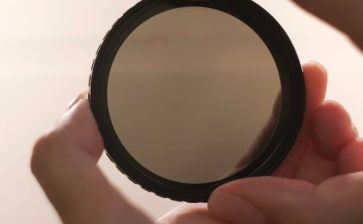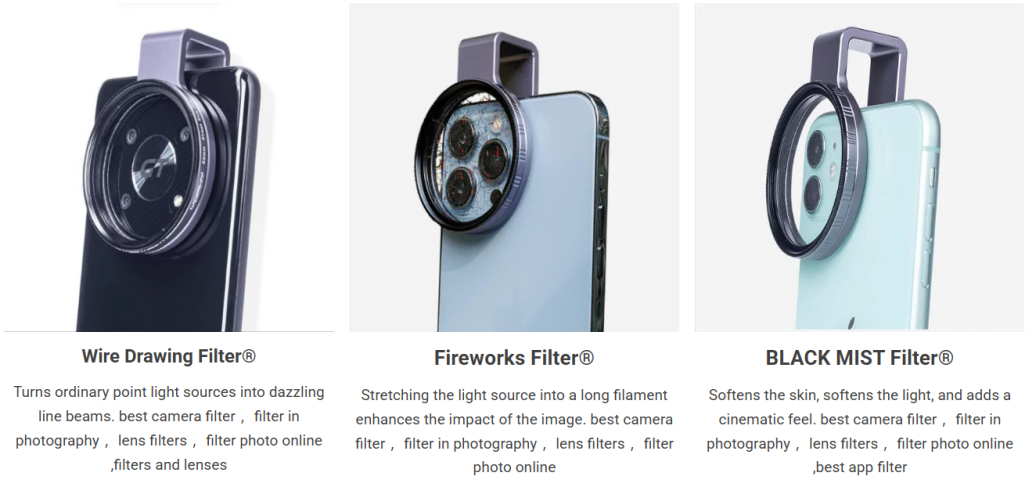
Request


Filters for lenses improve picture-taking by managing light and boosting creativity. This guide looks at kinds of lens filters, their uses, and benefits in different settings. Find out how HEMUSUN offers top-quality filters for lenses. They help you make better photos.
Filters for lenses are clear add-ons you put on camera lenses. They change the light that goes into the camera. They adjust brightness, cut glare, shield the lens, or make special effects. In today’s picture-taking, filters make photos look better. They give you more control over your art. They’re key tools for pros and hobbyists. Filters mix careful planning with creative ideas. They work in many shooting places.
Filters for lenses help in lots of ways. They make colors look truer in bright sun. They guard lenses from scratches in rough spots. They let you take long-lasting shots in daylight. Filters also cut reflections on water or glass. This makes pictures clearer. For example, someone taking nature photos can catch bright skies. A person doing face shots can get softer light. Filters let you shape pictures to fit your art needs.
Polarizing filters, or CPLs, cut shine and reflections from things like water or windows. They make blue skies deeper and green plants brighter. They also add more color to photos. By turning the filter, you control how strong the effect is. This works great for nature or outdoor face photos. Polarizers make pictures look lively and natural without extra editing.
Neutral Density (ND) filters lower light entering the lens. They don’t change colors. They let you use slower shutter times or bigger light openings in bright places. This helps make creative pictures. ND filters come in different strengths. They’re measured in stops. For example, an ND4 cuts light by two stops. They’re important for blurry motion effects or focusing on just one part of a bright scene.
ND filters are awesome for long-lasting shots. They slow down shutter times. This makes water look smooth, like in rivers. It also blurs moving clouds for cool skies. A 10-stop ND filter lets you take 30-second shots in sunlight. This turns busy scenes into calm, dreamy pictures. This way is popular for nature and artsy photos. It gives pictures a peaceful feel.
UV filters block extra light rays. They cut haze in outdoor photos. This is especially helpful in high places or near the sea. They also act like a shield. They keep the lens safe from scratches, dust, or bumps. Even though modern cameras don’t need UV filters as much, they keep pictures clear. They protect pricey lenses. This makes them a smart pick for daily shooting.
Special effect filters add fun looks to photos. Soft filters make face shots look dreamy. Star filters add sparkles to lights. Color fade filters make skies better or balance light in uneven scenes. These filters let you try new styles right in the camera. You don’t need as much computer editing. They spark creativity for unique photo projects.
Light changes which filter you should use. Polarizing filters shine in bright sunlight. They cut glare and make colors pop. But they lower light a bit, so they’re less useful in dim places. ND filters work in super bright spots. They let you control how light affects your shot. UV filters are handy anywhere. They protect the lens. Special effect filters depend on the look you want, like softening harsh noon light.
Seasons affect how you use filters. In spring, polarizing filters make flowers stand out against clear skies. In fall, fade filters warm up leaf colors. Winter snow photos look better with UV filters. They cut blue haze. Rainy or dusty days need UV filters to guard the lens. Using the right filter for the weather keeps your pictures looking good all year.
Different photo styles need different filters. Nature photographers use polarizing or ND filters. They make scenery bright or let you take long shots. Face photographers like soft or polarizing filters. These smooth skin or cut reflections. Close-up photographers use UV or polarizing filters. They make tiny details, like water drops on flowers, stand out. Picking the right filter matches your art goal and subject.
Photo Style | Suggested Filters | Benefits |
|---|---|---|
Nature | Polarizing, ND, Fade | Brightens colors, allows long shots, balances light |
Face Shots | Polarizing, Soft | Cuts glare, softens skin |
Close-Up | UV, Polarizing | Clears pictures, sharpens details |

HEMUSUN is a top supplier of filters for lenses and photo gear. They focus on doing things well. They offer smart solutions for photographers who want pro-level tools. Their know-how ensures filters give clear, strong results. They work for all kinds of creative projects, from nature to studio photos.
HEMUSUN has many lens filters and extra gear. These are made for clear pictures and long use. They work with regular cameras and phone cameras. HEMUSUN’s filters help creators make amazing photos. Contact them via their contact page for personal advice.
Filters for lenses make photography better. They manage light, protect gear, and spark creative effects. Knowing filter types, their uses, and weather factors leads to great photos. HEMUSUN’s top-quality filters help photographers improve their work. They deliver bright, pro-level pictures for any style.
A polarizing filter cuts glare and brightens colors. It’s great for sunny outdoor shots. An ND filter lowers light without changing colors. It’s good for long shots or wide openings in bright places. Each helps with different art goals.
Stacking filters can hurt picture quality. It might darken corners or add unwanted light spots. Use good, coated filters and stick to two, like UV and polarizing. Take off extra filters to keep pictures sharp and clear.
Clean filters with a soft cloth and lens cleaner. Wipe gently in circles. Keep them in cases to avoid scratches. Check for dust or smudges often. Clean them right away. This keeps filters working well and lasts longer.